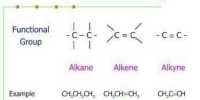Constituents of petroleum jelly are C25+. Being not a single organic compound but containing many such compounds, petroleum jelly does not have a melting point but a melting range. The lower limit of this range is likely to be between 40 and 60°C. By 100°C there will always be significant amounts of liquid, and this will have a kinematic viscosity in the range 5 to 25 cSt. The acoustic impedance impedance of petroleum jelly is 3 Mrayl.
The petroleum jelly industry is by now far advanced and any reader of this text will have had experience of Vaseline or a similar product. A heavier product still is paraffin wax, which contains compounds up to C40 or higher. Its discovery in the nineteenth century, when the use of candles for illumination was still common, provided an alternative to tallow for the manufacture of candles. Like petroleum jelly, paraffin wax can be produced in food grade. The familiar red wrapping around a piece of Edam cheese is an example of food grade paraffin wax.













